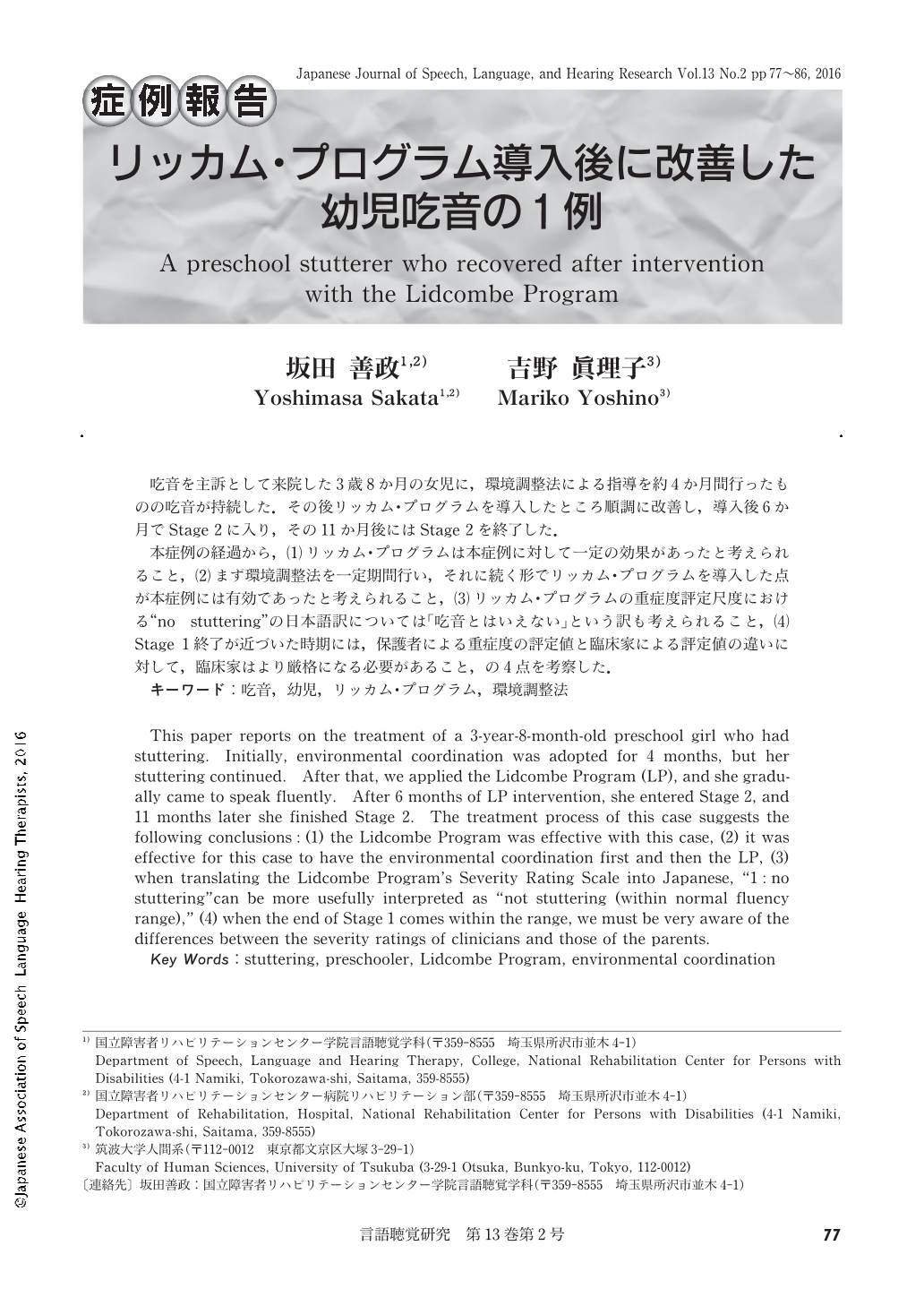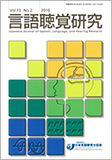Japanese
English
- 有料閲覧
- Abstract 文献概要
- 1ページ目 Look Inside
- 参考文献 Reference
- サイト内被引用 Cited by
吃音を主訴として来院した3歳8か月の女児に,環境調整法による指導を約4か月間行ったものの吃音が持続した.その後リッカム・プログラムを導入したところ順調に改善し,導入後6か月でStage 2に入り,その11か月後にはStage 2を終了した.
本症例の経過から,(1)リッカム・プログラムは本症例に対して一定の効果があったと考えられること,(2)まず環境調整法を一定期間行い,それに続く形でリッカム・プログラムを導入した点が本症例には有効であったと考えられること,(3)リッカム・プログラムの重症度評定尺度における“no stuttering”の日本語訳については「吃音とはいえない」という訳も考えられること,(4)Stage 1終了が近づいた時期には,保護者による重症度の評定値と臨床家による評定値の違いに対して,臨床家はより厳格になる必要があること,の4点を考察した.
This paper reports on the treatment of a 3-year-8-month-old preschool girl who had stuttering. Initially, environmental coordination was adopted for 4 months, but her stuttering continued. After that, we applied the Lidcombe Program (LP), and she gradually came to speak fluently. After 6 months of LP intervention, she entered Stage 2, and 11 months later she finished Stage 2. The treatment process of this case suggests the following conclusions:(1) the Lidcombe Program was effective with this case, (2) it was effective for this case to have the environmental coordination first and then the LP, (3) when translating the Lidcombe Program's Severity Rating Scale into Japanese, "1:no stuttering"can be more usefully interpreted as "not stuttering (within normal fluency range)," (4) when the end of Stage 1 comes within the range, we must be very aware of the differences between the severity ratings of clinicians and those of the parents.

Copyright © 2016, Japanese Association of Speech-Language-Hearing Therapists. All rights reserved.


